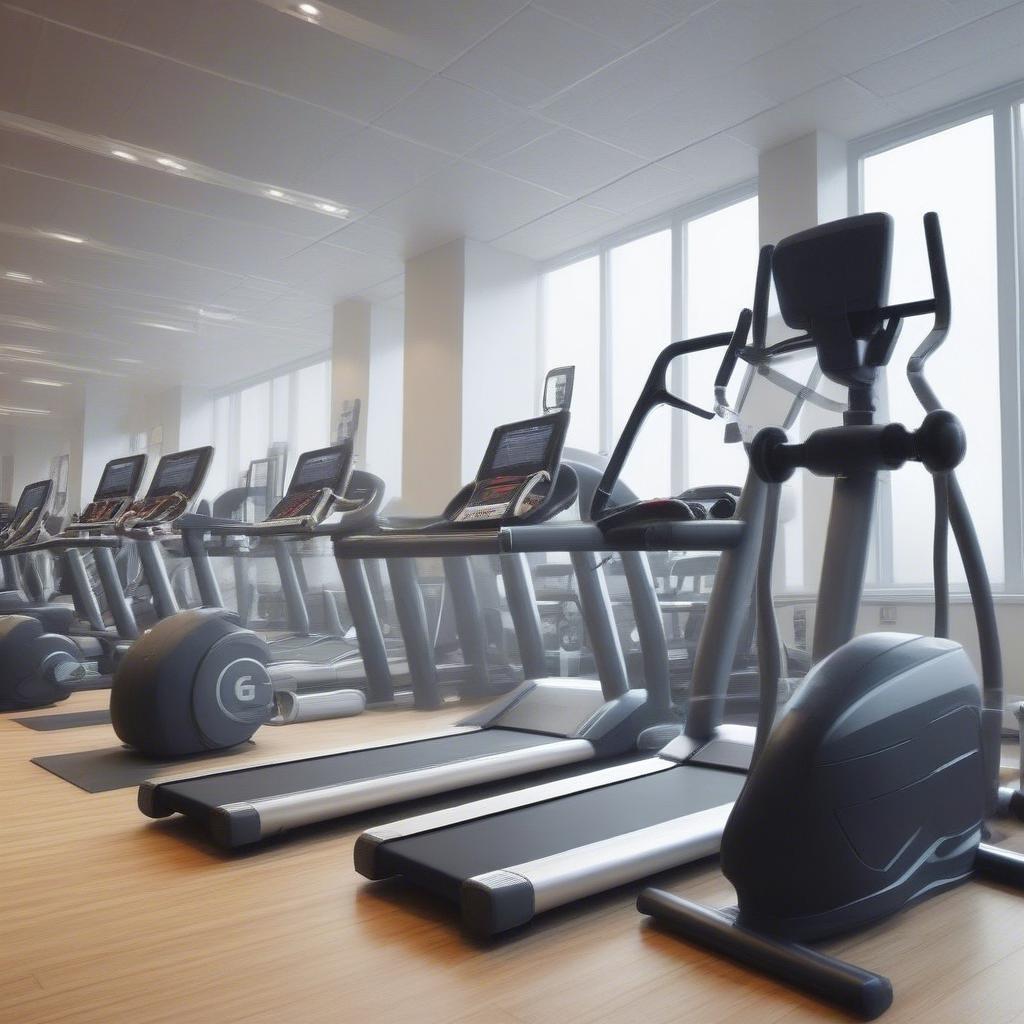
So, you’re passionate about fitness, have a vision for an amazing gym, and you’re ready to make it happen. But like many entrepreneurs, you might be facing the hurdle of funding. Don’t worry, securing gym business loans is achievable, and this guide will illuminate the path, offering a comprehensive look at everything from exploring fitness center financing options to practical steps you can take right now. We’ll break down the complexities into manageable steps, making the journey less intimidating and more successful.
Why Do You Need Gym Business Loans?
Let’s face it, opening or expanding a gym isn’t cheap. It involves significant upfront costs and ongoing expenses. Here’s a breakdown of why funding options are so crucial for a fitness business:
Startup Costs: Laying the Foundation
- Leasehold Improvements: Transforming a space into a functional and appealing gym often requires renovations. This could include installing new flooring, creating changing rooms, building showers, and more. These costs can quickly add up.
- Equipment Purchase: Treadmills, weight machines, free weights, cardio equipment – this is the heart of your gym. High-quality equipment is a major investment, and securing gym business loans will help you acquire the essential gear.
- Initial Inventory: Even if you’re not selling retail products, you’ll need items like cleaning supplies, first-aid kits, and possibly fitness accessories like yoga mats. This initial stock needs funding.
- Legal and Permits: Obtaining the necessary licenses and permits to operate legally can also incur costs. Don’t forget about insurance which is another significant upfront cost.
Ongoing Operational Expenses: Keeping the Lights On
- Rent or Mortgage Payments: Whether you rent your space or own it, consistent payments are paramount.
- Utilities: Electricity, water, heating, and internet are crucial for your day-to-day operations.
- Staff Salaries: Hiring qualified fitness instructors, trainers, and front desk staff is essential for delivering quality service. Salaries can represent a major chunk of your operating budget.
- Marketing and Advertising: Attracting and retaining members requires consistent effort, which means investing in marketing initiatives.
- Maintenance and Repairs: Gym equipment requires regular maintenance, and occasional repairs are inevitable. Having a budget for this is vital.
- Software and Technology: Membership management systems, booking software, and even music licensing can represent recurring costs.
Without fitness center financing, many ambitious gym owners find their dreams stalled before they even begin. Loans can bridge the gap, allowing you to invest in your business and set the stage for success.
Types of Funding Options for Gyms
Now that we’ve established why funding is essential, let’s explore the various funding options available. Each type comes with its own set of requirements, advantages, and disadvantages. Understanding these differences will help you select the best option for your specific needs.
Traditional Bank Loans: The Classic Route
- What it is: These are loans provided by banks or credit unions. They usually come with fixed interest rates, repayment terms, and often require collateral.
- Pros:
- Relatively lower interest rates compared to other gym business loans options.
- Predictable repayment schedule.
- Can be a large sum of money, suitable for major investments.
- Cons:
- Can be difficult to qualify for, particularly for new businesses or those with poor credit scores.
- Often requires extensive documentation, a solid business plan, and sometimes collateral.
- The approval process can be lengthy.
- Best For: Established businesses with a strong financial history and good credit.
SBA Loans: Government-Backed Support
- What it is: The Small Business Administration (SBA) guarantees a portion of the loan, reducing the risk for lenders and making it easier for small businesses to secure funding.
- Pros:
- Generally more lenient qualification requirements compared to traditional loans.
- Lower down payments and longer repayment terms.
- Government backing increases the likelihood of approval.
- Cons:
- The application process can be complex and time-consuming.
- Not all lenders are SBA-approved.
- May require more paperwork than a traditional loan.
- Best For: Businesses seeking more favorable terms and those that might not qualify for a conventional loan.
Equipment Financing: Specifically for Gear
- What it is: A loan specifically designed to purchase equipment. The equipment itself usually acts as collateral.
- Pros:
- Easier to obtain since the equipment acts as security.
- Can preserve working capital.
- Focuses on funding the core need of a gym – fitness equipment.
- Cons:
- Interest rates might be slightly higher than traditional loans.
- May not cover other business expenses beyond equipment.
- You don’t fully own the equipment until the loan is paid off.
- Best For: Businesses looking to purchase fitness equipment without needing to use other funding options.
Business Lines of Credit: Flexibility at Your Fingertips
- What it is: Provides a revolving credit account that allows you to draw funds as needed up to a specified limit.
- Pros:
- Flexible and convenient – only pay interest on the funds you use.
- Suitable for managing short-term cash flow needs.
- Provides a safety net during unexpected expenses.
- Cons:
- Interest rates can fluctuate and can sometimes be higher than traditional loans.
- May require strong credit to qualify.
- Not ideal for major, long-term expenses.
- Best For: Covering operational costs, handling seasonal fluctuations in cash flow, and covering unexpected expenses.
Alternative Lenders and Online Loans: Speed and Convenience
- What it is: These lenders are not traditional banks and often have more flexible lending criteria. Online platforms offer a streamlined application process.
- Pros:
- Faster application and approval process.
- More lenient qualification requirements.
- Suitable for businesses that don’t qualify for traditional loans.
- Cons:
- Interest rates are typically higher compared to banks and credit unions.
- May come with shorter repayment periods.
- The terms and fees might be less transparent.
- Best For: Businesses that need funds quickly or have not been approved by traditional lenders.
Crowdfunding: Tapping into Community Support
- What it is: Raising funds from a large number of people through online platforms.
- Pros:
- Can generate both capital and community support.
- Can help with marketing and brand awareness.
- No need to repay the funds if using a donation-based model.
- Cons:
- Success depends on the strength of your pitch and marketing efforts.
- May require a significant amount of time and effort.
- No guarantee of reaching your funding goal.
- Best For: Businesses that have a strong community backing and are looking for alternative gym business loans options.
Preparing for Loan Application: Setting Yourself Up for Success
Securing a loan isn’t just about choosing the right type; it’s about being prepared. Here’s a step-by-step guide to help you put your best foot forward:
Step 1: Craft a Solid Business Plan
Your business plan is the cornerstone of your loan application. It demonstrates to lenders that you have a clear vision and strategy for success.
- Executive Summary: A brief overview of your gym, its mission, and goals. This section summarizes your entire plan.
- Company Description: Details about your business, your services, your location, and your target market.
- Market Analysis: Research on your target market, your competitors, and market trends. Demonstrate your understanding of the fitness industry.
- Organization and Management: Information about the structure of your business, your team, and their qualifications.
- Service or Product Line: Detailed description of the fitness programs, equipment, and any other offerings you will provide.
- Marketing and Sales Strategy: Outline how you plan to attract and retain members, including pricing strategies.
- Funding Request: Clearly state how much funding you need and how you intend to use it. Be specific!
- Financial Projections: Include financial statements such as profit and loss projections, cash flow forecasts, and balance sheets for at least three years. This helps lenders assess your business’s financial viability.
Tip: Use a template! You don’t have to build a business plan from scratch. Many free and affordable resources offer templates to help you structure your plan effectively.
Step 2: Organize Your Financial Documents
Lenders will scrutinize your financial history to determine your creditworthiness. Gather these documents:
- Personal Credit Reports: Check your credit score and report for any errors. Address any issues beforehand.
- Bank Statements: Provide at least three months of business and personal bank statements.
- Tax Returns: Prepare your personal and business tax returns for the last two to three years.
- Profit and Loss Statements: If you have an existing business, submit your P&L statements for the past few years, which show your business’s financial performance.
- Balance Sheets: Submit balance sheets, which showcase your assets, liabilities, and equity.
- Cash Flow Projections: Demonstrate your ability to manage cash flow by projecting the movement of money in and out of your business.
- Debt Schedule: List all your existing debts, both business and personal.
- Lease Agreements or Purchase Agreements: If you’ve already secured a location or equipment, have these documents ready.
Tip: Maintain organized and accurate financial records. This not only makes loan applications easier but also helps you manage your business efficiently.
Step 3: Understand Your Credit Score
Your credit score plays a crucial role in determining your eligibility for gym business loans.
- Check Your Score: Use services like Equifax, Experian, or TransUnion to obtain your credit report.
- Identify Issues: Look for any errors, late payments, or outstanding debts that could negatively impact your score.
- Improve Your Score: Take steps to improve your credit by paying bills on time, reducing debt, and avoiding new credit applications. A good credit score will lead to more favorable loan terms.
Step 4: Define Your Funding Needs
Be clear about how much funding you need and what you’ll use it for. A lender will want to know precisely how the loan will be allocated.
- Startup vs. Expansion: If you’re starting a gym, you’ll need funding for initial expenses. If you’re expanding, demonstrate why the additional funds are necessary.
- Specific Expenses: List the exact equipment, renovations, marketing, and operational costs you plan to cover. The more specific, the better.
- Justify Your Amount: Show how the loan amount is directly related to your projected costs and how it will contribute to revenue generation.
Step 5: Choose the Right Loan Option
Based on your financial situation and business needs, decide which loan type is best for you. Consider these factors:
- Your credit score: If you have a lower score, you might consider SBA loans or alternative lenders.
- Your funding needs: If you need equipment, explore equipment financing. If you need operational funds, consider a line of credit.
- Interest rates and terms: Compare interest rates, repayment terms, and fees from different lenders.
- Repayment Ability: Ensure you can comfortably repay the loan based on your projected cash flow.
Step 6: Prepare Your Loan Application
Once you’ve gathered all your documents and have decided on a loan type, prepare your application carefully.
- Complete the Application Accurately: Ensure all information is correct and clearly presented. Double-check for errors.
- Write a Compelling Narrative: Explain your vision for the gym, your passion for fitness, and why your business will be successful.
- Highlight Strengths: Showcase the unique aspects of your gym and your competitive edge.
- Be Honest: Honesty and transparency are critical throughout the application process.
Post-Approval: Managing Your Loan and Growing Your Gym
Securing gym business loans is just the first step. Once you’ve received approval, focus on these crucial aspects:
Loan Management
- Track Your Spending: Be disciplined with how you use your loan funds. Track all expenses carefully.
- Maintain Your Finances: Keep accurate records of all financial transactions, ensuring you meet all repayment obligations.
- Monitor Your Cash Flow: Project and monitor your cash flow to ensure you can repay your loan on time.
- Communicate with Your Lender: Keep in contact with your lender and let them know if there are any changes or challenges. Open communication is key.
Business Growth
- Member Retention: Focus on delivering excellent service and creating a community that keeps members engaged.
- Marketing and Promotion: Continuously promote your gym through online and offline channels.
- Customer Feedback: Actively collect and respond to customer feedback.
- Innovation: Keep up with the latest fitness trends and find new ways to improve your offerings.
- Financial Planning: Constantly evaluate your business performance, identify opportunities for improvement, and ensure long-term profitability.
Learn Business: Your Partner in Success
At Learn Business, we understand the challenges you face as a small business owner. That’s why we offer a range of resources designed to support you every step of the way. Specifically, Learn Business provides:
- Comprehensive Business Plan Templates: Designed specifically for fitness-related businesses, our templates provide the framework and structure you need to craft a winning business plan. With our templates, you won’t have to start from scratch. They include key elements like market analysis, financial projections, and strategic plans.
- Financial Management Guides: Our step-by-step guides break down the complexities of financial management into actionable steps. This includes budgeting, cash flow forecasting, and financial reporting, all crucial for attracting investors and staying on track.
- Personalized Support: Learn Business provides dedicated support from experienced business mentors. They are there to answer your questions and provide personalized advice tailored to your specific needs.
- Loan Application Assistance: We offer guidance on loan application processes, helping you prepare all the necessary documentation. This helps you maximize your chances of loan approval.
- Legal and Compliance Resources: We provide crucial insights and access to resources to make sure your gym is legally compliant. This will help you avoid common pitfalls.
Our mission at Learn Business is to empower small business owners like you with the tools and knowledge needed to thrive. We understand that every business is unique, and we tailor our resources to help you meet your specific needs and challenges. Whether you’re seeking gym business loans or need advice on managing your cash flow, Learn Business is your partner in success.
Conclusion
Securing gym business loans can seem daunting, but with careful preparation, a solid business plan, and the right approach, it’s entirely achievable. Remember that understanding your funding needs, exploring all your funding options, and keeping your finances well-organized are essential steps to secure the necessary capital. Use the resources at Learn Business to get the support you need to make your dream gym a successful reality. With the right resources, planning, and determination, your passion for fitness can transform into a thriving business.



Leave a Reply